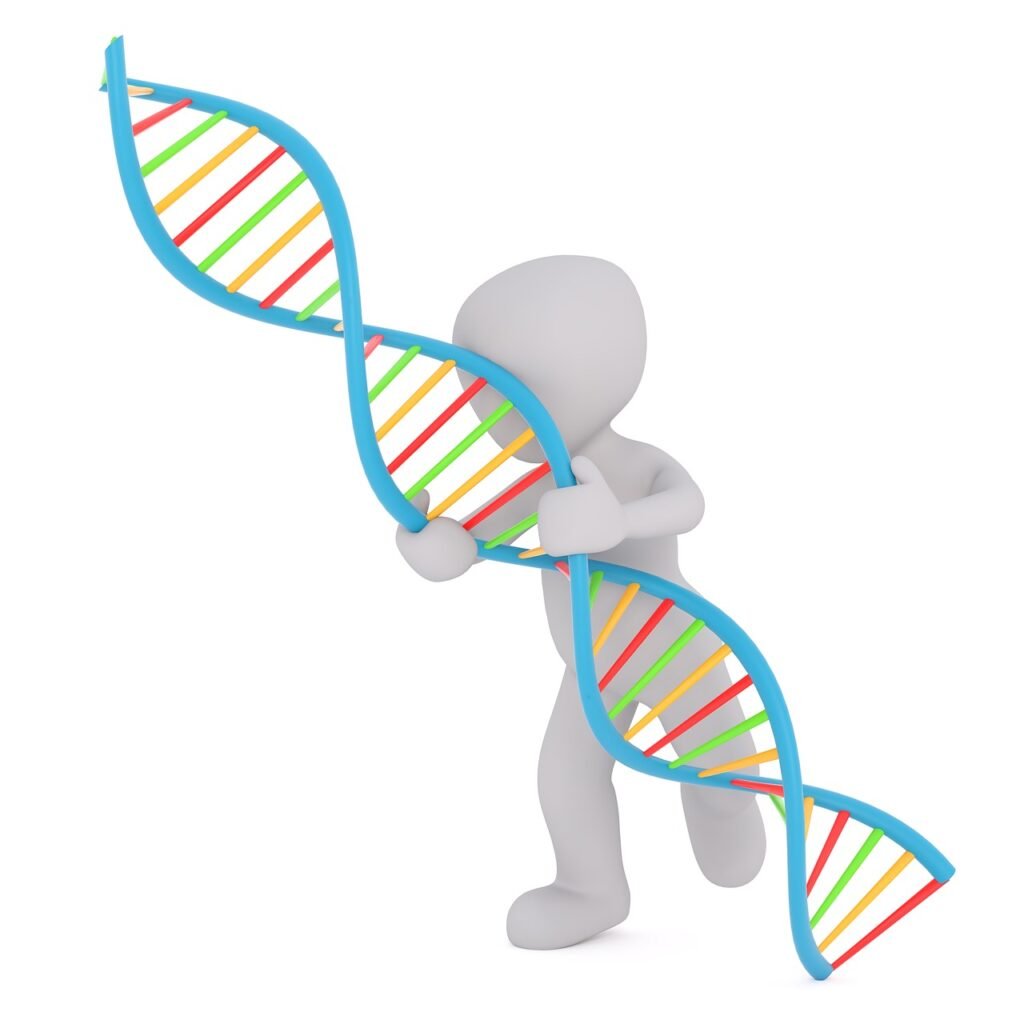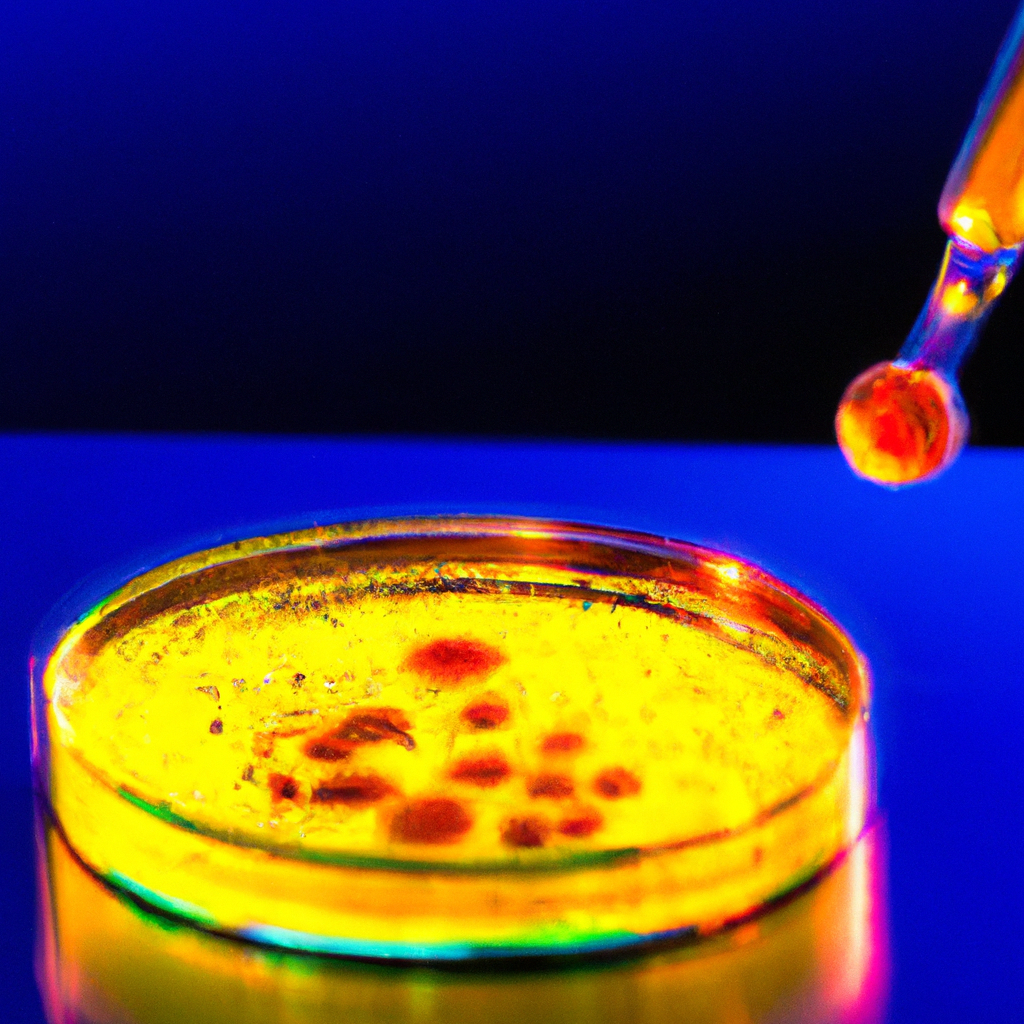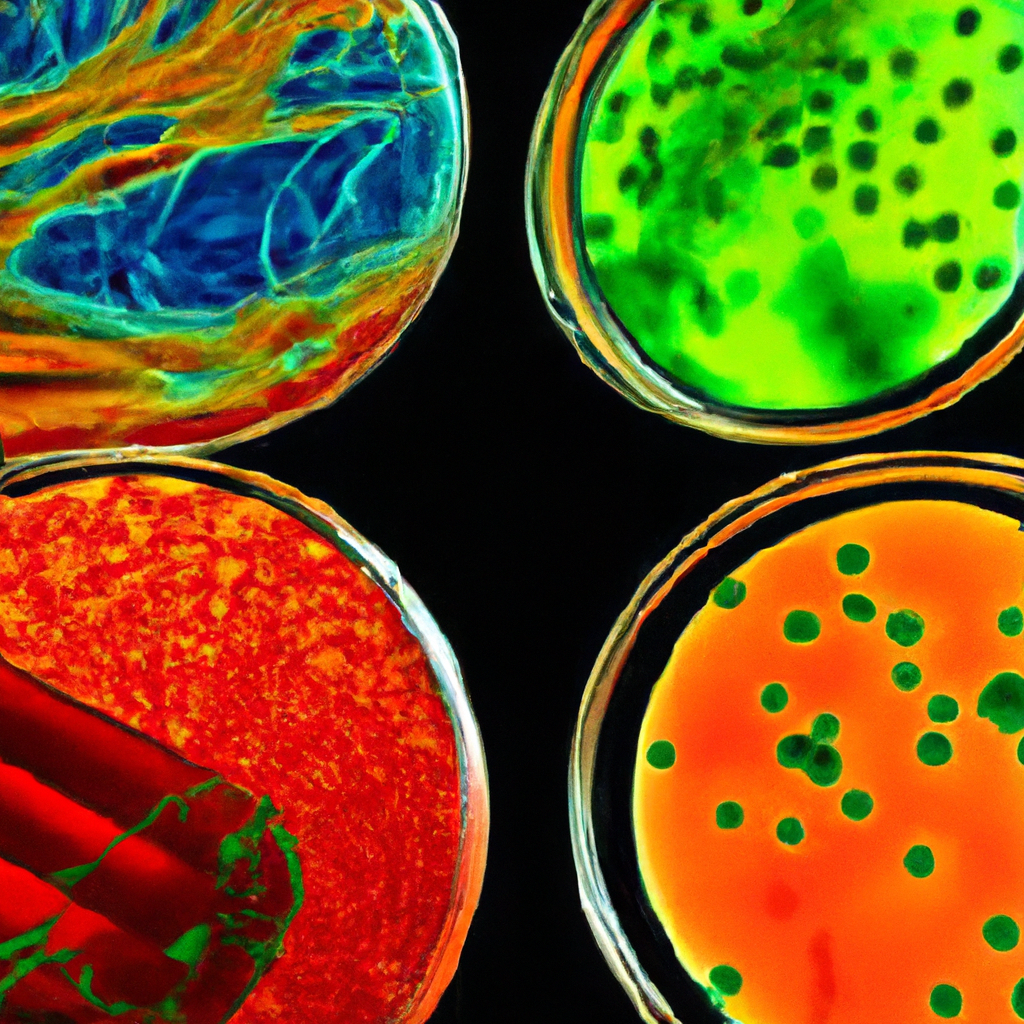Did you know that stem cells play a crucial role in wound healing and tissue repair in Malaysia? In this article, we will explore the fascinating world of stem cell research and its benefits in promoting healing and regeneration. From understanding the basics of stem cells to delving into their application in wound care, this article will provide you with valuable insights into the pivotal role of stem cells in Malaysia’s healthcare system. So, let’s uncover the wonders of stem cells and how they contribute to improving the lives of patients across the country.

Understanding Stem Cells
Stem cells are a type of cell found in our bodies that have the unique ability to self-renew and differentiate into various cell types within our bodies. They are often referred to as the body’s “master cells” because they have the potential to become any type of cell, including muscle cells, nerve cells, and blood cells. Stem cells play a crucial role in the development, growth, and repair of our tissues and organs.
Definition of Stem Cells
Stem cells are defined as undifferentiated cells that have the ability to develop into specialized cells and regenerate damaged tissues. These cells have the remarkable capacity to divide and produce identical copies of themselves, known as self-renewal. They can also differentiate into various cell types, such as muscle cells, nerve cells, and blood cells, depending on the signals they receive from the surrounding environment.
Types of Stem Cells
There are several different types of stem cells, each with its own unique characteristics and potential uses in medical treatments.
-
Embryonic Stem Cells: These stem cells are derived from embryos that are a few days old. They are pluripotent, meaning they have the ability to differentiate into any cell type in the body. Embryonic stem cells have been the focus of intense research due to their potential in regenerative medicine.
-
Adult Stem Cells: Also known as tissue-specific or somatic stem cells, these cells are found in various tissues and organs throughout the body. Adult stem cells are multipotent, meaning they can differentiate into a limited number of cell types. For example, hematopoietic stem cells in the bone marrow can give rise to blood cells, while mesenchymal stem cells can differentiate into bone, cartilage, and fat cells.
-
Induced Pluripotent Stem Cells (iPSCs): These stem cells are created in the laboratory by reprogramming adult cells, such as skin cells, to behave like embryonic stem cells. iPSCs have the potential to differentiate into any cell type in the body, similar to embryonic stem cells.
Properties of Stem Cells
Stem cells possess several unique properties that set them apart from other cells in our body.
-
Self-renewal: Stem cells can divide and produce identical copies of themselves, ensuring an ongoing supply of undifferentiated cells.
-
Pluripotency: Some stem cells, such as embryonic stem cells and iPSCs, have the ability to differentiate into any cell type in the body.
-
Potency: Stem cells can be classified based on their developmental potential. Totipotent stem cells can give rise to all cell types in the body, including the placenta and embryonic tissues. Pluripotent stem cells can differentiate into any cell type in the body, but not the placenta or embryonic tissues. Multipotent stem cells can differentiate into a limited number of cell types.
-
Regenerative Capacity: Stem cells have the ability to repair and regenerate damaged tissues and organs in our bodies. They can replace damaged or dying cells with healthy functional ones.
Wound Healing and Tissue Repair
Wound healing is a complex biological process that occurs in response to tissue injury. It involves a series of overlapping stages, including hemostasis, inflammation, proliferation, and remodeling. The ultimate goal of wound healing is the restoration of normal tissue structure and function. However, in some cases, the healing process may be impaired, leading to chronic wounds that are slow to heal or do not heal at all.
Overview of Wound Healing
When our skin gets injured, our body initiates a series of mechanisms to repair the damaged tissue and restore its integrity. The process of wound healing can be divided into four main stages:
-
Hemostasis: This stage involves the formation of a blood clot at the site of injury to stop bleeding. Platelets and coagulation factors are recruited to the site to facilitate clot formation.
-
Inflammation: Inflammation is a crucial stage in wound healing as it helps to remove debris and prevent infection. Inflammatory cells, such as neutrophils and macrophages, are recruited to the wound site to clear away dead cells and bacteria.
-
Proliferation: During this stage, new blood vessels are formed to supply oxygen and nutrients to the wound site. Additionally, fibroblasts produce collagen, which provides strength to the healing tissue. Epithelial cells migrate to cover the wound, and granulation tissue is formed.
-
Remodeling: In this final stage, the newly formed collagen fibers are rearranged and strengthened, resulting in a stronger scar. This process can take several months to complete.
Challenges in Wound Healing
While the body has a remarkable ability to heal wounds, there are several factors that can impede the wound healing process. These include:
-
Chronic conditions: Patients with chronic conditions such as diabetes, cardiovascular disease, and immune disorders may have impaired wound healing due to compromised blood flow, weakened immune response, and delayed tissue regeneration.
-
Infections: Wounds that become infected are more difficult to heal as the presence of bacteria can prolong the inflammatory phase and impair cell migration and tissue repair.
-
Poor nutrition: Adequate nutrition is crucial for proper wound healing. Deficiencies in essential nutrients, such as protein, vitamins, and minerals, can impair the body’s ability to repair and regenerate tissues.
-
Advanced age: As we age, our body’s natural ability to heal wounds decreases. The skin becomes less elastic, and the production of collagen decreases, making it more challenging for wounds to heal.
Role of Stem Cells in Wound Healing
Stem cells have emerged as promising candidates for enhancing the wound healing process. They possess unique properties that make them ideal for tissue repair and regeneration. Here are some ways stem cells contribute to wound healing:
-
Enhanced cell proliferation: Stem cells have the ability to stimulate cell proliferation, which can accelerate the healing process. They release growth factors and cytokines that promote the growth and division of cells involved in wound repair.
-
Differentiation into multiple cell types: Stem cells can differentiate into various cell types, including skin cells, blood vessels, and connective tissue cells. By providing a source of these specialized cells, stem cells can contribute to the formation of new tissue and help restore normal tissue structure and function.
-
Immunomodulation: Stem cells possess immunomodulatory properties, meaning they can regulate the immune response. By modulating the inflammatory response at the wound site, stem cells can promote a more favorable environment for tissue repair and healing.
-
Angiogenesis: Stem cells have the capacity to stimulate the growth of new blood vessels, a process known as angiogenesis. This is crucial for wound healing as it ensures an adequate blood supply to the site of injury, allowing for the delivery of oxygen and nutrients necessary for tissue regeneration.
-
Extracellular matrix production: Stem cells can produce extracellular matrix components, such as collagen, that provide structural support to the healing tissue. This helps to strengthen the wound and promote the formation of a scar.
Researchers in Malaysia have been actively studying the role of stem cells in wound healing and tissue repair. These studies have shown promising results, highlighting the potential of stem cell therapies in improving the outcomes of wound healing treatments.

Stem Cell Therapies in Malaysia
Malaysia is at the forefront of stem cell research and therapy, with significant advancements being made in the field. Stem cell therapies have gained popularity in the country for their potential in treating various medical conditions and improving patients’ quality of life.
Current Status of Stem Cell Therapies
Stem cell therapies are currently being used in Malaysia for a range of clinical indications. These include:
-
Orthopedic conditions: Stem cells derived from bone marrow or adipose tissue are being used to treat orthopedic conditions such as osteoarthritis, tendon injuries, and cartilage defects. These therapies aim to promote tissue regeneration and reduce pain and inflammation.
-
Neurological disorders: Stem cell therapies are being investigated as potential treatments for neurological disorders such as Parkinson’s disease and stroke. Researchers are exploring the use of stem cells to promote neuronal regeneration and improve functional outcomes in these conditions.
-
Cardiovascular diseases: Stem cells have shown promise in the treatment of cardiovascular diseases, including myocardial infarction and peripheral arterial disease. These therapies aim to regenerate damaged heart or blood vessel tissue and improve cardiac function.
-
Autoimmune disorders: Stem cell therapies are being explored as potential treatments for autoimmune disorders such as multiple sclerosis and systemic lupus erythematosus. These therapies aim to modulate the immune response and suppress disease activity.
Regulation and Legal Framework
In Malaysia, stem cell therapies are regulated by the Ministry of Health to ensure patient safety and ethical practice. The National Pharmaceutical Regulatory Agency (NPRA) oversees the regulation of stem cell products and ensures compliance with Good Manufacturing Practice (GMP) standards.
In 2018, the Malaysian Guidelines for the Use of Stem Cells in Research and Therapy were introduced to provide guidance to healthcare professionals and researchers involved in stem cell treatments. These guidelines outline the ethical considerations, safety standards, and documentation requirements for stem cell therapies.
Popular Stem Cell Therapies in Malaysia
Several stem cell therapies have gained popularity in Malaysia due to their potential benefits and positive patient outcomes. Some of the popular stem cell therapies in the country include:
-
Autologous stem cell therapy: This therapy involves using stem cells derived from the patient’s own body, typically from bone marrow or adipose tissue. Autologous stem cell therapy eliminates the risk of rejection or allergic reactions and may offer personalized treatment options.
-
Allogeneic stem cell therapy: Allogeneic stem cell therapy involves using stem cells derived from a donor other than the patient. This therapy allows for a wider range of donor options and may be suitable for patients who do not have viable autologous stem cell sources.
-
Mesenchymal stem cell therapy: Mesenchymal stem cells (MSCs) are a type of adult stem cell that can differentiate into various cell types. MSCs have anti-inflammatory and immunomodulatory properties, making them suitable for the treatment of autoimmune disorders and inflammatory conditions.
-
Platelet-rich plasma (PRP) therapy: PRP therapy involves using a patient’s own blood, which is processed to concentrate platelets and growth factors. The concentrated platelets are then injected into the area of injury or tissue damage, promoting the body’s natural healing response.
It is important to note that while stem cell therapies offer potential benefits, they are not yet considered standard medical treatments and should be administered by qualified healthcare professionals in authorized facilities.
Clinical Studies and Research
Malaysia has a vibrant research community that is actively engaged in studying stem cells and their applications in various fields. This research aims to enhance our understanding of stem cells, develop novel therapies, and improve patient outcomes.
Local Research Efforts
Researchers in Malaysia have been conducting studies to investigate the potential of stem cells in various areas of medicine. Some of the ongoing research efforts include:
-
Regenerative medicine: Researchers are exploring the use of stem cells to regenerate damaged tissues and organs, with a focus on conditions such as spinal cord injury, liver disease, and heart failure.
-
Cancer therapy: Stem cells are being investigated as potential vehicles for targeted drug delivery in cancer therapy. Researchers are exploring the use of engineered stem cells to deliver therapeutic agents directly to tumor sites, minimizing side effects and improving treatment outcomes.
-
Aging and longevity: Stem cells have been implicated in the aging process, and researchers are studying the mechanisms behind stem cell senescence and their impact on aging-related diseases. This research aims to develop interventions that can rejuvenate stem cells and slow down the aging process.
Advancements in Stem Cell Research
Advancements in stem cell research have paved the way for new discoveries and potential treatments. Some of the recent advancements in stem cell research include:
-
Gene editing: Researchers have developed advanced gene-editing techniques, such as CRISPR-Cas9, which allow for precise manipulation of the stem cell genome. This has opened up new avenues for studying stem cells and developing personalized therapies.
-
Organoid technology: Organoids are three-dimensional structures derived from stem cells that resemble miniaturized versions of organs. This technology allows researchers to study the development and function of organs in a lab setting, providing valuable insights into disease mechanisms and potential treatments.
-
Cell reprogramming: The ability to reprogram adult cells into pluripotent stem cells has revolutionized the field of stem cell research. This technique, known as induced pluripotent stem cell (iPSC) technology, allows researchers to generate patient-specific stem cells for studying disease mechanisms and developing personalized therapies.
Clinical Trials in Malaysia
Malaysia has been actively involved in conducting clinical trials to evaluate the safety and efficacy of stem cell therapies. These trials aim to gather scientific evidence and determine the potential benefits of stem cell treatments in various medical conditions.
Clinical trials in Malaysia follow strict ethical guidelines and are regulated by the National Medical Research Register (NMRR) and the Medical Research and Ethics Committee (MREC). Some of the ongoing clinical trials in Malaysia include:
-
Stem cell therapy for osteoarthritis: This clinical trial aims to assess the safety and effectiveness of mesenchymal stem cell therapy in patients with knee osteoarthritis. The trial evaluates the functional outcomes and pain relief in patients receiving stem cell treatment compared to standard treatments.
-
Stem cell therapy for stroke: This clinical trial investigates the potential of stem cell therapy in improving functional outcomes and quality of life in patients with ischemic stroke. The trial evaluates the feasibility, safety, and efficacy of intravenous administration of stem cells derived from bone marrow.
-
Stem cell therapy for diabetes: This clinical trial aims to assess the safety and effectiveness of autologous bone marrow-derived stem cell therapy in patients with type 2 diabetes. The trial evaluates the impact of stem cell therapy on blood sugar control, insulin resistance, and diabetic complications.
These clinical trials provide valuable insights into the potential of stem cell therapies and contribute to the advancement of medical knowledge in Malaysia.

Impact on Healthcare Industry
Stem cell therapies have the potential to revolutionize the healthcare industry by offering innovative treatment options for a range of medical conditions. Here are some of the key benefits and challenges associated with stem cell therapies:
Benefits of Stem Cell Therapies
-
Tissue regeneration: Stem cells have the ability to regenerate damaged tissues, offering a potential solution for patients with conditions that involve tissue degeneration or damage.
-
Personalized medicine: Stem cell therapies can be tailored to individual patients, taking into account their unique genetic makeup and disease characteristics. This personalized approach has the potential to improve treatment outcomes and minimize side effects.
-
Reduced reliance on donor organs: Stem cell therapies may reduce the need for donor organs in transplant procedures. Instead of waiting for a compatible donor organ, patients could potentially receive stem cell-based treatments to repair or regenerate their own damaged organs.
-
Minimized risk of rejection: Autologous stem cell therapies, which use the patient’s own stem cells, eliminate the risk of rejection or allergic reactions associated with donor organs or tissues.
Challenges and Limitations
-
Safety concerns: The safety of stem cell therapies is a major concern, as improper administration or use of unregulated stem cell products may result in adverse effects or complications.
-
Standardization of procedures: The lack of standardized protocols and guidelines for stem cell therapies poses a challenge in ensuring consistent and reproducible treatment outcomes.
-
High cost: Stem cell therapies can be expensive, making them inaccessible to a large segment of the population. Affordability and reimbursement issues need to be addressed to make these treatments more widely available.
-
Long-term effects and efficacy: Long-term follow-up studies are needed to determine the long-term safety and effectiveness of stem cell therapies. More research is required to understand the optimal dosage, administration route, and frequency of stem cell treatments.
Future Trends in Stem Cell Research
The field of stem cell research is rapidly evolving, and several exciting trends are shaping the future of stem cell therapies. Here are some key future trends to watch:
-
Bioengineered organs: Researchers are working towards the development of bioengineered organs using stem cells and 3D printing technologies. These artificial organs could potentially alleviate the shortage of donor organs and provide long-lasting solutions for patients in need of organ transplantation.
-
Gene therapy combined with stem cell therapies: The combination of stem cell therapies with gene editing techniques holds great potential for the treatment of genetic disorders. Researchers are exploring ways to use stem cells as vehicles for delivering therapeutic genes to target cells, correcting genetic mutations and restoring normal cellular function.
-
Organ-on-a-chip technology: Organ-on-a-chip technology involves creating miniature organs that mimic the structure and function of real organs. This technology allows researchers to study the effects of drugs and toxins on specific organs, providing valuable insights into disease mechanisms and drug development.
-
Advancements in tissue engineering: Tissue engineering techniques, in combination with stem cell therapies, are being developed to create functional tissues and organs in the laboratory. These bioengineered tissues and organs could be used for transplantation or drug testing purposes.
With continued research and advancements, stem cell therapies have the potential to transform healthcare and provide new treatment options for patients in Malaysia and around the world.
Ethical Considerations
The use of stem cells in research and therapies raises several ethical considerations. It is important to ensure that stem cell research and treatments are conducted in an ethically responsible manner. Here are some key ethical considerations:
Stem Cell Research Ethics
-
Informed consent: Adequate informed consent should be obtained from individuals participating in stem cell research, ensuring that they fully understand the risks, benefits, and potential outcomes of the study.
-
Respect for human life: The use of embryonic stem cells raises ethical concerns as it involves the destruction of embryos. Careful consideration should be given to the source of stem cells used in research and therapies to respect human life.
-
Source of stem cells: The procurement and use of stem cells should adhere to ethical guidelines and regulations. Stem cells should be obtained from legal and ethical sources, and the dignity of donors should be respected.
Public Perception and Awareness
Public perception and awareness of stem cell research and therapies play a crucial role in shaping the ethical landscape. It is important to engage in open dialogue and education to ensure that the public has accurate information and a clear understanding of the potential benefits and risks associated with stem cell treatments.
Addressing Ethical Concerns
To address ethical concerns associated with stem cell research and therapies, it is essential to establish proper regulatory frameworks and guidelines. These frameworks should ensure the protection of patients, promote responsible research and practice, and provide oversight for the development and implementation of stem cell therapies.
Transparent communication between researchers, healthcare professionals, regulators, and the public is key to addressing ethical concerns and maintaining public trust in stem cell research and therapies.

Collaborations and Partnerships
Collaborations and partnerships are vital for advancing stem cell research and therapies in Malaysia. Various stakeholders, including government agencies, academic institutions, and industry players, play a crucial role in driving progress in the field.
Government Initiatives
The Malaysian government has demonstrated strong support for stem cell research and therapies through various initiatives. These include funding research projects, establishing regulatory frameworks, and promoting collaboration among researchers and healthcare professionals.
Government agencies such as the Ministry of Health, the Ministry of Science, Technology and Innovation, and the Ministry of Higher Education work together to provide guidance, support, and oversight for stem cell research and therapies in the country.
Academic Institutions
Academic institutions in Malaysia are actively engaged in stem cell research and education. These institutions serve as hubs of knowledge and expertise, conducting groundbreaking research, training future scientists, and collaborating with other institutions locally and internationally.
Research centers and laboratories within universities, such as the Stem Cell and Molecular Biology Laboratory at Universiti Kebangsaan Malaysia and the Institute of Medical Molecular Biotechnology at Universiti Putra Malaysia, are at the forefront of stem cell research in the country.
Industry Collaborations
Collaborations between academia and industry are essential for translating stem cell research into clinical applications. Industry players, including pharmaceutical companies and biotechnology firms, contribute to the development and commercialization of stem cell therapies.
These collaborations foster innovation, provide funding and resources, and facilitate the translation of promising research findings into viable treatment options for patients.
By fostering collaborations and partnerships among various stakeholders, Malaysia can position itself as a leading hub for stem cell research and therapies in the region.
Case Studies and Success Stories
Real-life examples and success stories highlight the potential of stem cell therapies and their impact on patients’ lives. Here are some case studies and success stories from Malaysia:
Real-Life Examples
-
Patient A: Patient A, a 50-year-old with severe osteoarthritis in both knees, underwent autologous stem cell therapy in Malaysia. The treatment involved extracting stem cells from the patient’s own bone marrow and injecting them into the affected knee joints. The patient experienced significant pain relief and improved mobility, allowing them to resume daily activities.
-
Patient B: Patient B, a 35-year-old with type 1 diabetes, underwent autologous stem cell therapy to regenerate pancreatic beta cells. The stem cells were isolated from the patient’s own blood and injected into the pancreas. After the treatment, the patient’s blood sugar levels stabilized, and insulin requirements were significantly reduced.
Patient Experiences
-
Mr. Lim: Mr. Lim, a stroke survivor, underwent stem cell therapy in Malaysia as part of a clinical trial. The therapy involved the intravenous administration of stem cells derived from bone marrow. After the treatment, Mr. Lim noticed improvements in his motor function and speech, leading to a better quality of life.
-
Mrs. Tan: Mrs. Tan, a patient with systemic lupus erythematosus, participated in a stem cell therapy trial in Malaysia. The therapy involved the infusion of mesenchymal stem cells to modulate her immune response. Following the treatment, Mrs. Tan experienced a reduction in disease activity and improved overall well-being.
These case studies and patient experiences illustrate the potential benefits of stem cell therapies and underscore their impact on improving patients’ quality of life.

Future Directions and Potential
The future of stem cell research and therapies in Malaysia holds great promise. Advancements in technology, increased understanding of stem cell biology, and collaboration among various stakeholders are paving the way for exciting developments in the field.
Emerging Technologies
-
Organoid technology: Further advancements in organoid technology hold great potential for studying disease mechanisms and drug development. Organoids derived from patient-specific stem cells could be used to identify personalized treatment options and improve clinical outcomes.
-
Gene editing tools: The continued development of gene editing tools, such as CRISPR-Cas9, will enable researchers to precisely manipulate the genome of stem cells for therapeutic purposes. This will open up new avenues for developing targeted treatments for genetic disorders.
-
Artificial intelligence (AI): The integration of AI in stem cell research and therapies has the potential to accelerate progress in the field. AI algorithms can analyze vast amounts of data, identify patterns, and predict treatment outcomes, leading to more effective and personalized stem cell therapies.
Application in Regenerative Medicine
Regenerative medicine, which aims to restore, replace, or regenerate damaged tissues and organs, holds significant potential for stem cell therapies. Stem cells can be used to treat a wide range of medical conditions, including:
-
Neurological disorders: Stem cell therapies offer hope for patients with neurological disorders, such as Alzheimer’s disease, Parkinson’s disease, and spinal cord injuries. The ability of stem cells to differentiate into neuronal cells and promote neural regeneration makes them valuable tools in regenerative medicine.
-
Cardiovascular diseases: Stem cell therapies have the potential to repair damaged heart tissue and improve cardiac function in patients with cardiovascular diseases, including heart failure and myocardial infarction. The ability of stem cells to differentiate into cardiac muscle cells and promote angiogenesis makes them attractive candidates for regenerative approaches.
-
Orthopedic conditions: Stem cell therapies can be used to promote tissue regeneration and repair in orthopedic conditions, including osteoarthritis, ligament injuries, and bone fractures. Stem cells can differentiate into bone, cartilage, and tendon cells, providing a promising avenue for tissue repair in these conditions.
Stem Cells for Personalized Medicine
The advent of personalized medicine has opened up new possibilities for stem cell therapies. By using patient-specific stem cells, researchers can develop tailored treatments that take into account an individual’s genetic makeup, disease characteristics, and treatment responses.
Personalized stem cell therapies offer the potential for improved treatment outcomes, reduced side effects, and better patient experiences. These therapies may become more accessible and widespread as technology advances and costs decrease.
Conclusion
In conclusion, stem cells play a crucial role in wound healing and tissue repair in Malaysia. They possess unique properties that make them ideal for regenerating damaged tissues and promoting the healing process. Stem cell therapies have gained popularity in Malaysia for their potential in treating various medical conditions and improving patients’ quality of life. Ongoing research efforts, clinical trials, and collaborations among various stakeholders are driving progress in the field and shaping the future of stem cell therapies. However, ethical considerations, regulatory frameworks, and public awareness are vital for ensuring the responsible and ethical use of stem cell research and therapies. With continued advancements, stem cell therapies have the potential to revolutionize healthcare in Malaysia and beyond, offering innovative treatment options for patients and improving overall health outcomes.




